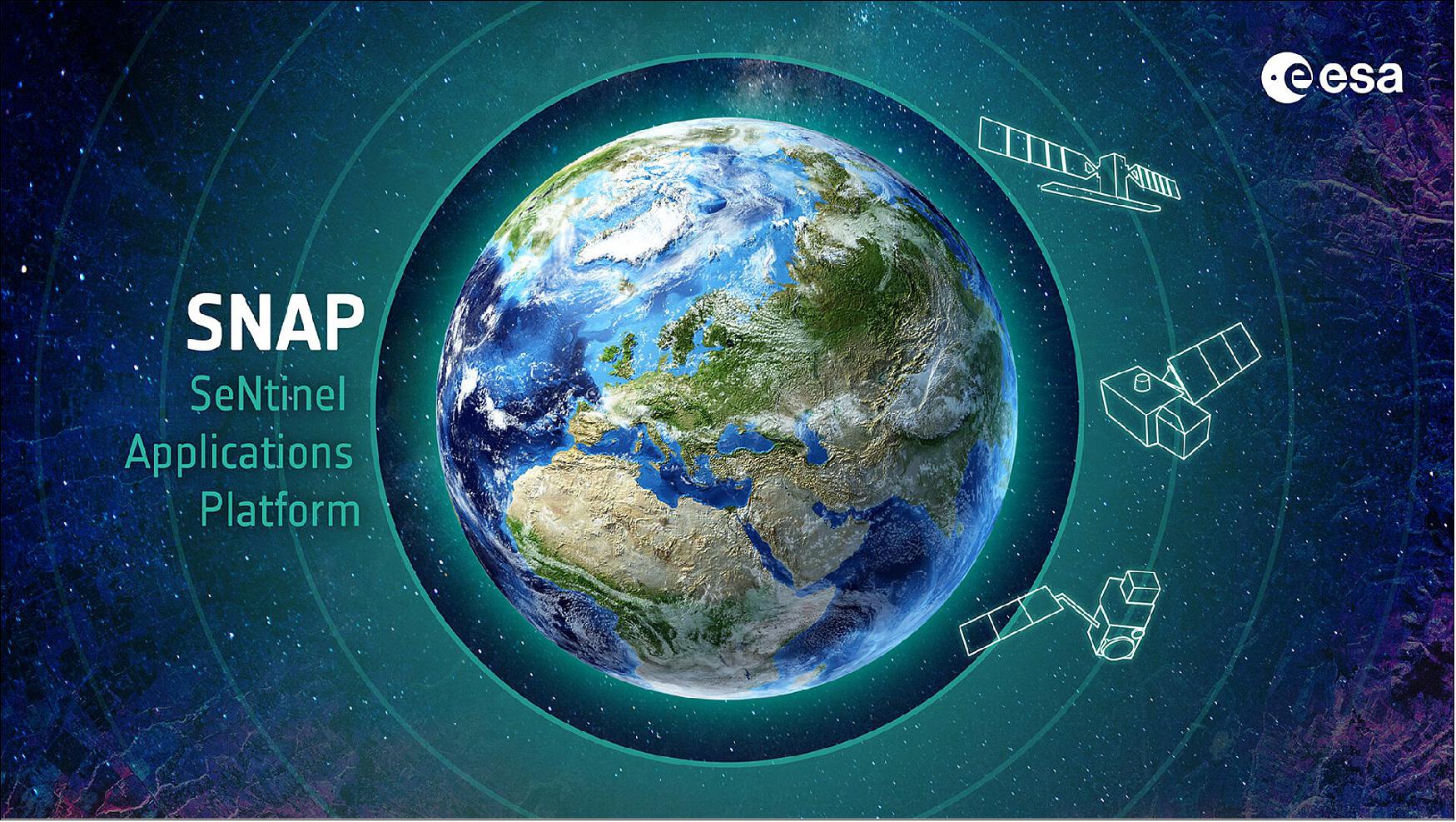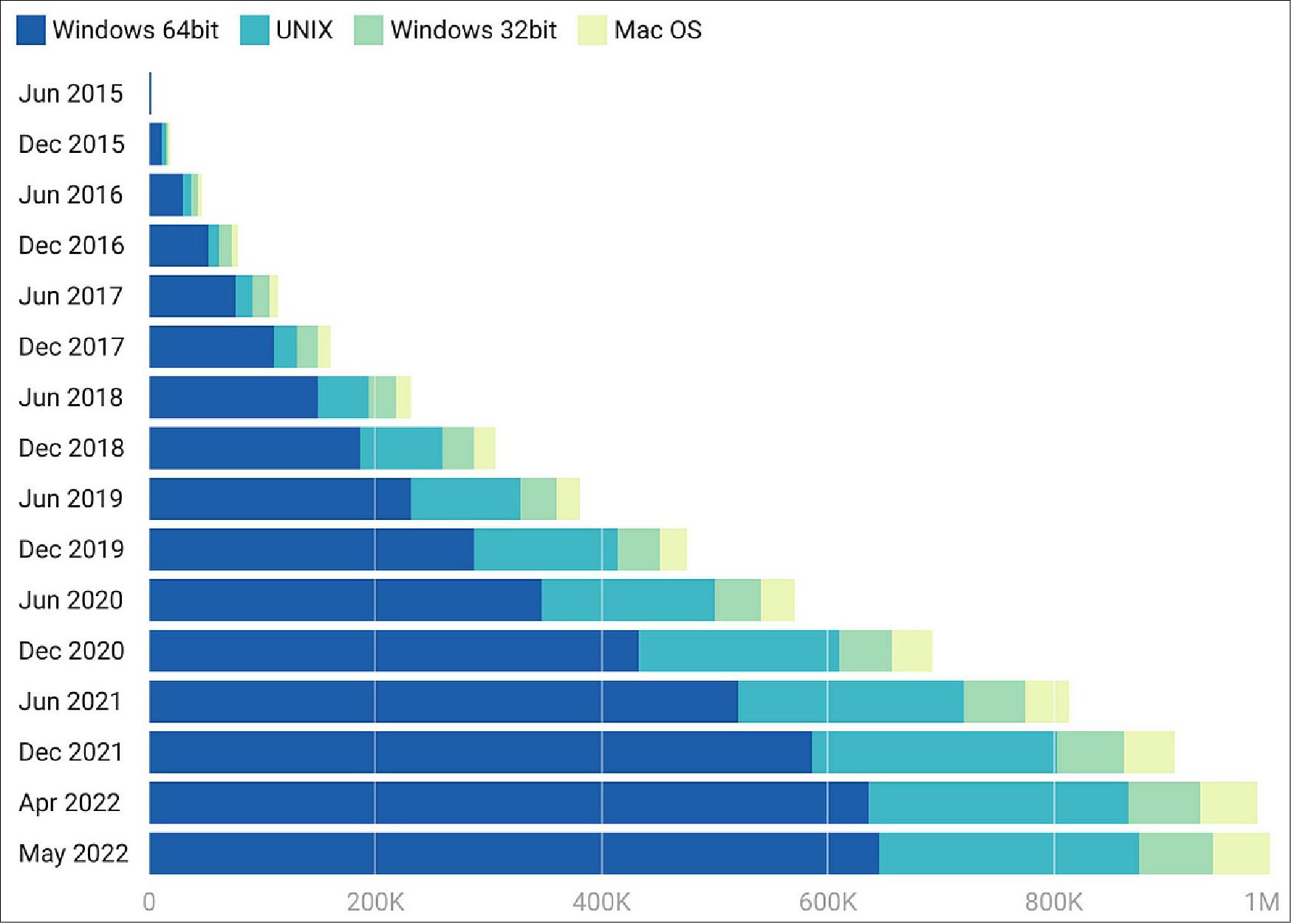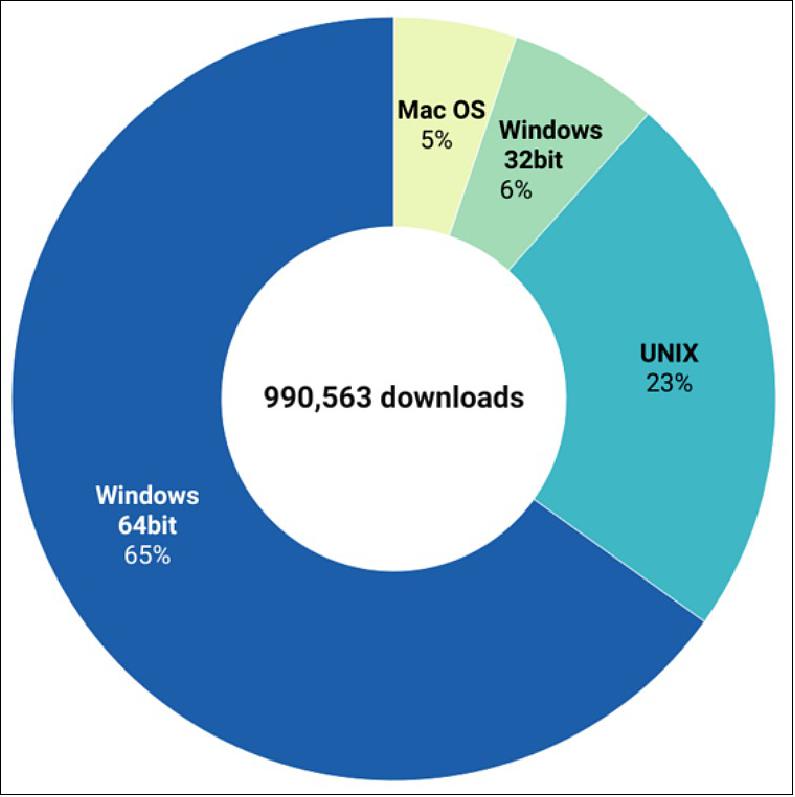SNAP (Sentinel Application Platform)
Tools and Platforms
SNAP (Sentinel Application Platform) toolbox
SNAP is an open-access Earth observation analysis tool that has continued to grow in popularity in the seven years since its launch has now been projected to reach one million downloads, ESA announced today at the Living Planet Symposium. 1)
The milestone reflects ESA’s efforts to accelerate the provision of freely accessible remote-sensing information, including open-source tools, to the expanding global community of data users.

The SNAP tool provides access to environmental information from numerous remote-sensing missions, including Sentinel-1, Sentinel-2 and Sentinel-3 of the European Union’s Copernicus Programme.
It also incorporates data from ESA Earth Explorer missions, such as the SMOS satellite, as well as numerous Third Party missions that are operated by international partners.
SNAP enables people to explore, analyse and process remote-sensing data, facilitating cutting-edge scientific research, education and training activities, and the development of a wide range of operational applications. SNAP enjoys wide adoption in many remote-sensing communities including academia, Earth observation service providers and the satellite remote-sensing industry in general.

Its easy-to-use interface means that it is accessible to people with little experience of coding and programming, as well as by data analysis experts. SNAP features an attractive graphical user interface as well as command-line usage via scripting, making it suitable for usage anywhere, from laptops to data centers.
The origins of SNAP can be traced back to 2003, when ESA developed a toolbox – named BEAM – to view and process optical data from the agency’s ERS and Envisat missions.
A few years later, ESA began work on a new tool called NEST for processing and analysing ESA and third-party synthetic aperture radar data, which became available in 2007.
For almost seven years these tools were developed in parallel with separate codebases but, at the dawn of the Copernicus Sentinel era, ESA began merging them into a single platform – and, in 2014, this gave rise to SNAP, simplifying both the development and usage of the toolboxes. The functionality of the predecessor toolboxes is now part of SNAP, and new functionality is added in a modular manner.
Since its launch, ESA has worked to ensure that SNAP is continually improved to meet the needs of its expanding user base.
SNAP and other ESA toolboxes can be accessed via the Science Toolbox Exploitation Platform (STEP) website, which also hosts the SNAP discussion forum with 10,000+ registered users, as well as documentation, tutorials, third-party plugins and so on.
A new version, SNAP 9.0, is due to be released the week after the Living Planet Symposium. It contains a multitude of new functions, as well bug fixes, and usability and performance enhancements.
SNAP is currently developed by a consortium that includes Brockmann Consult GmbH (DE), CS France (FR), CS Romania (RO), SenSar (NL) and SkyWatch (CA).

References
1) ”SNAP spurs Earth observation innovation with one million downloads,” ESA Applications, 24 May 2022, URL: https://www.esa.int/Applications/Observing_the_Earth/FutureEO/SNAP_spurs_Earth_observation_innovation_with_one_million_downloads??haha
The information compiled and edited in this article was provided by Herbert J. Kramer from his documentation of: ”Observation of the Earth and Its Environment: Survey of Missions and Sensors” (Springer Verlag) as well as many other sources after the publication of the 4th edition in 2002. - Comments and corrections to this article are always welcome for further updates (eoportal@symbios.space).